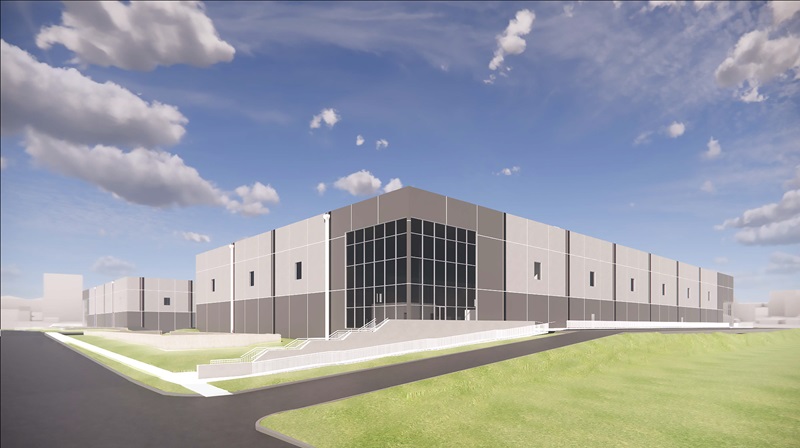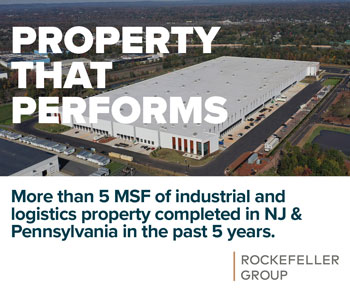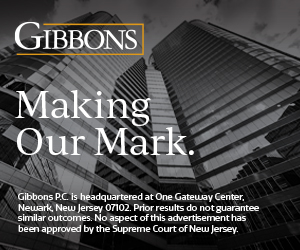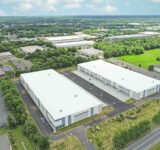A project by Deugen Forterra New Brunswick LLC would bring 195,421 square feet of new warehouse space across two buildings to 705 Joyce Kilmer Ave. in New Brunswick. — Rendering courtesy: Taylor Architecture & Design
By Joshua Burd
An affiliate of Deugen Development has secured a key local approval for a plan that would bring nearly 200,000 square feet of new warehouse space to New Brunswick.
According to Taylor Architecture & Design, a member of the project team, the city’s planning board voted unanimously earlier this month to approve the application for 705 Joyce Kilmer Ave. That represents a key step for the proposal, which calls for buildings of 109,799 and 85,622 square feet in a location that’s roughly two miles Route 1 and minutes from other highways.
Taylor Architecture’s Brian M. Taylor designed the project with assistance from the firm’s Stacy Mulrain, noting that the buildings would flank a central truck court and largely obscure the loading docks from view. The team added that the site’s main driveway entrance would align with an existing intersection, while the property would have a large radiused entrance, making truck circulation safe and efficient.
Plans also call for 7,500 square feet office space at each warehouse, which will be ADA-compliant, along with 16 loading docks, two drive-in ramps and two trash compactors, according to a news release. The combined buildings can accommodate up to four tenants, while the property would have 97 on-site parking spaces, including eight with electric vehicle chargers.
Other features will include bioretention basins in front of each building that were designed by Dynamic Engineering as part of the site’s stormwater management system, the news release said. The developer, Deugen Forterra New Brunswick LLC, worked alongside a team that also included land use attorney Thomas Kelso of Kelso Burgess, civil engineer James Henry and traffic engineer Justin Taylor of Dynamic and professional planner Kate Keller of Phillips Preiss Grygiel Leheny Hughes LLC.
As Taylor noted, the design calls for precast concrete wall panels that will have three shades of contrasting gray with a distinct base and vertical accents to break up and articulate the façade. Punched windows in the center of each module will provide natural light and architectural character, while each of the four office corner locations will be adorned with large expanses of curtainwall glazing to identify the building entrances and provide transparency to the façade.









